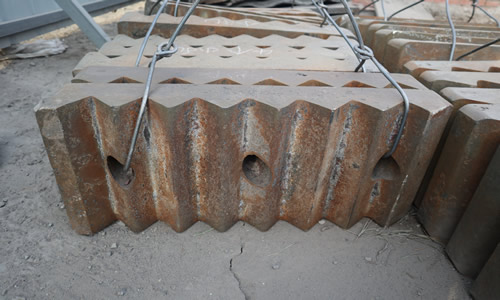1. Control of the material source Before the sand and gravel material (wool material) is mined, the soil layer overlying the useful material layer should be cleaned up, and it is not allowed to mix with covering soil, grass roots and other impurities. The covering layer should be cleaned up as much as possible at one time, and leave a surplus width to prevent the covering soil from slipping and mixing in the excavated wool. In view of the high groundwater level and shallow burial depth of mudstone, before mining, open drainage channels should be excavated to reduce groundwater; during the excavation process, mining should be carried out in order from bottom to high, and the overburden stripping width should not be less than 0.8m; strictly Control the excavation depth, and the thickness of the reserved layer is not less than 0.2m.
2. The control mechanism of particle gradation (fineness modulus) The sand gradation is poor and the fineness modulus is larger, mainly due to the cumulative sieve rate of 2.36mm and the larger pass rate of 0.075mm, so the control mechanism is required The key to the sand gradation and fineness modulus lies in the adjustment of the minimum size of vibrating screen and the intensity of dust removal (sand washing). The adjustment of the screen hole size is completed reliably by replacing the vibrating screen, and the adjustment of the intensity of dust removal (sand washing) is completed with reliable adjustment of wind power (water flow). Practice has proved that when the minimum size of the vibrating screen is 3.5mm, the fineness modulus of the manufactured sand is generally within 3.4, and the gradation meets the standard requirements.
3. Controlling the content of stone powder In the production process of sand, a small amount of stone powder with a particle size of less than 0.075mm is inevitably attached. According to the quality standard of natural sand, particles smaller than 0.075mm are defined as mud, and the limit on the content of mud is very strict. The stone powder in machine-made sand is obviously different from mud. A large number of experimental studies and engineering application practices show that a certain amount of stone powder in machine-made sand is of great help to improve the working performance of low- and medium-strength grade concrete, and has almost no effect on the strength of concrete. But when the stone powder content is higher, it will have an adverse effect on the preparation of high-strength concrete. Therefore, how to remove and control the excess stone powder in the machine-made sand is one of the key technologies in the production of machine-made sand. The methods currently used mainly include dry dust collection and wet washing. Dry dust collection is to select a dust collector with a good dust collection effect, and determine the working condition parameters of the dust collector according to the requirements of the stone powder content in the machine-made sand, but this method is only suitable for the production of class III machine-made sand. Water washing and powder removal of machine-made sand is a key technology for producing high-quality machine-made sand, but water conservation and environmental protection should be paid attention to.

The high manganese steel liner plate for mining crusher produced by Xinxiang Xinnai Casting Manufacturing Co., Ltd., under the premise of controlling the wear resistance, toughness and hardness of the product, strengthens the strict management of the production process, reduces the price increase of the product, and effectively guarantees the customer cost Increased, the high chromium composite hammers, alloy hammers, high chromium cast irons, wear-resistant hammers, and mill liners produced by Xinnai Castings have been recognized by customers and have received friendly feedback from many customers. Xinnai Castings are high-quality Choice, honest and trustworthy operation, strict quality management, and serve customers wholeheartedly.